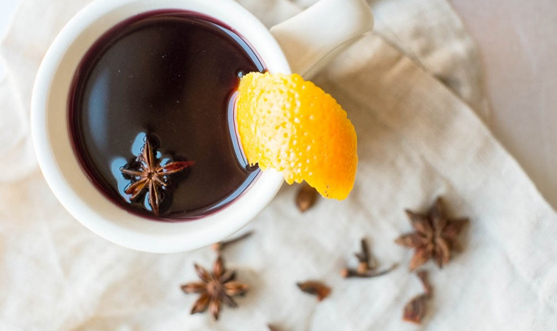The Right Kind of Mulled Wine
Laura on 1 Dec 2014
Now that I’ve started to feel a little bit Christmassy, I’ve decided to mark the beginning of December and the build up to Christmas by looking at the perfect mulled wine recipe.

I often wonder what the best type of red to use is, with a fair bit to consider in the process; cost and flavour being the key players. Whenever I make mulled wine it tends to be a few of us getting involved, so I don’t necessarily want to throw in 3 bottles of that ‘special wine’ I’ve been keeping on hold for a while – and you don’t want to tamper with a good quality wine too much by adding spoonfuls of other festive ingredients. Guy Woodward, Editor of Decanter magazine tried his own experiment at Christmas last year to find out what the best base wine would be. His conclusion, after comparing a range of different styles, was that the cheaper wines came out on top. In this situation it is the method used and ingredients chosen to make the mulled wine that play a more important part.
With this in mind, I’ve put together a list of 5 wines under £10 that will definitely do the trick – alongside a tried and tested recipe that you can give a go too.
5 Wines Under £10 - Perfect for Mulling
-
Le Rouleur, Carignan Vin de France £6.95
-
Boheme Primitivo £6.75 (My recommendation)
-
El Viento Cabernet Sauvignon £7.50
-
Le Notaire Grenache £6.95
-
Warburn Estate Mullygrubber Shiraz Cabernet £7.50 (Special price - Christmas offer)
Ingredients (multiply depending on your preferred amount)
1 bottle of juicy red wine, 1 orange (juice + zest), 2 cinnamon sticks, 6 whole cloves, 2 star anise, 25-5-ml brandy (if you want an extra warming mulled wine), 1 whole nutmeg for grating, 1 vanilla pod (halved)
You can do your own variation of this depending on what you have available so the best thing about this recipe is you can really make it to your own tastes. If you start by cooking off a small glug of the red wine with the rest of the ingredients over a relatively high heat, a syrup-like texture should slowly start to come together. Once this has bubbled away for a couple of minutes, lower the heat so that you can add the rest of the wine. You can then leave this to simmer and infuse until you’re ready to drink it, making sure that the heat is low enough that you don’t burn off all of the alcohol in the wine.


